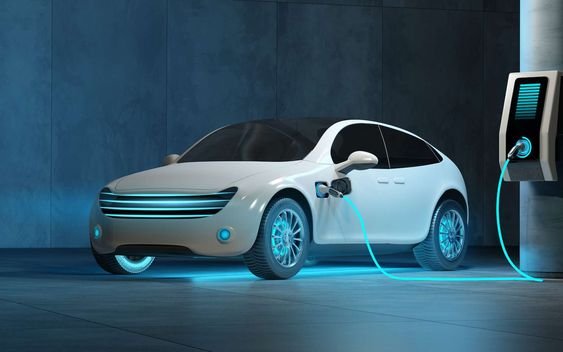
Electric vehicles (EVs) are no longer a niche segment of the automotive market; they have become a driving force of change within the industry. As concerns about climate change and environmental sustainability grow, EVs are leading the charge toward a cleaner, more efficient future. This article explores how electric vehicles are transforming the automotive industry, from manufacturing and technology to consumer behavior and environmental impact.
The Rise of Electric Vehicles
Growing Popularity and Market Share
Over the past decade, electric vehicles have seen a significant increase in popularity. Advances in battery technology, government incentives, and a growing network of charging infrastructure have made EVs more accessible and practical for a wider audience. In 2023, EV sales accounted for nearly 15% of all new vehicle sales globally, a number that is expected to rise rapidly in the coming years.
Major automakers like Tesla, Nissan, BMW, and Chevrolet have played pivotal roles in popularizing EVs, but traditional automotive giants such as Ford, General Motors, Volkswagen, and Toyota are also investing heavily in electric mobility. The result is a rapidly expanding market with a diverse range of electric vehicles, from affordable compact cars to luxury sedans and SUVs.
Government Support and Regulations
Governments around the world are supporting the transition to electric vehicles through various policies and incentives. These include tax rebates, grants for EV purchases, and investments in charging infrastructure. In addition, many countries have announced plans to phase out internal combustion engine (ICE) vehicles, setting deadlines for when only zero-emission vehicles will be allowed for sale. These regulatory measures are accelerating the adoption of EVs and pushing automakers to innovate and expand their electric offerings.
Impact on Automotive Manufacturing
Shift in Production Processes
The rise of electric vehicles is driving significant changes in automotive manufacturing. EVs have fewer moving parts than traditional ICE vehicles, which simplifies the manufacturing process but also requires a shift in production techniques. Automakers are investing in new assembly lines, retooling factories, and adopting automation to handle the production of electric drivetrains and battery packs.
Battery Technology and Supply Chain Challenges
Batteries are the heart of electric vehicles, and their production presents unique challenges. The demand for lithium-ion batteries has surged, leading to increased investment in battery manufacturing facilities, often referred to as “gigafactories.” These factories require significant resources, including rare materials like lithium, cobalt, and nickel, which has led to concerns about the sustainability and ethical sourcing of these materials.
To address these challenges, automakers and tech companies are exploring alternative battery chemistries, such as solid-state batteries, which promise greater energy density, faster charging times, and improved safety. Additionally, companies are working on recycling programs to recover valuable materials from used batteries, helping to create a more sustainable supply chain.
Job Transformation in the Industry
The shift to electric vehicles is also transforming the automotive workforce. While the production of EVs is less labor-intensive than that of ICE vehicles, it requires a different set of skills. Workers need training in areas like battery technology, electronics, and software development. As a result, automakers are investing in workforce development programs to ensure their employees are prepared for the transition to electric mobility.
Technological Advancements
Advancements in Battery Technology
Battery technology is at the forefront of the EV revolution. Over the past decade, the energy density of lithium-ion batteries has improved, leading to longer driving ranges and shorter charging times. The cost of batteries has also decreased significantly, making electric vehicles more affordable.
Looking ahead, the development of solid-state batteries is expected to be a game-changer. These batteries use a solid electrolyte instead of a liquid one, which can improve safety and energy density. Solid-state batteries could enable EVs to travel longer distances on a single charge and reduce the overall weight of the vehicle, further enhancing efficiency.
Autonomous Driving and Connectivity
Electric vehicles are often at the cutting edge of autonomous driving technology. Many EVs are equipped with advanced driver-assistance systems (ADAS) that use sensors, cameras, and artificial intelligence to enable features like adaptive cruise control, lane-keeping assist, and automatic parking. Some automakers, like Tesla, are pushing the boundaries of full self-driving capabilities, with the goal of making autonomous vehicles a reality.
In addition to autonomy, EVs are highly connected, with built-in infotainment systems, over-the-air (OTA) software updates, and the ability to communicate with other vehicles and infrastructure. This connectivity allows for continuous improvement of vehicle performance and safety features, making electric vehicles more adaptable and future-proof.
Integration with Renewable Energy
Electric vehicles are not just changing how we drive; they are also transforming how we use and generate energy. Many EV owners are adopting solar panels and home energy storage systems to charge their vehicles using renewable energy. This integration of EVs with renewable energy sources reduces reliance on fossil fuels and contributes to a more sustainable energy ecosystem.
Moreover, some EVs are equipped with vehicle-to-grid (V2G) technology, which allows them to feed energy back into the grid during peak demand times. This capability helps stabilize the electrical grid and provides an additional source of income for EV owners.
Environmental and Social Impact
Reduction of Greenhouse Gas Emissions
One of the most significant impacts of electric vehicles is their potential to reduce greenhouse gas emissions. Unlike ICE vehicles, EVs produce zero tailpipe emissions, which means they do not release carbon dioxide (CO2) or other pollutants into the atmosphere while driving. This makes EVs a crucial tool in the fight against climate change, particularly as the global energy mix shifts towards renewable sources.
However, the overall environmental impact of EVs depends on how the electricity used to charge them is generated. In regions where coal or other fossil fuels dominate the energy mix, the benefits of EVs can be diminished. As more countries transition to cleaner energy sources like wind, solar, and hydroelectric power, the environmental advantages of EVs will continue to grow.
Reduction of Noise Pollution
Electric vehicles are also contributing to a reduction in noise pollution, especially in urban areas. EVs operate much more quietly than ICE vehicles, making cities quieter and more pleasant places to live. This reduction in noise pollution can have positive effects on public health, reducing stress and improving overall quality of life.
Social and Economic Implications
The widespread adoption of electric vehicles has broader social and economic implications. As the demand for oil decreases, oil-producing regions may experience economic shifts, while countries with abundant renewable energy resources could see economic growth. Additionally, the transition to EVs could create new job opportunities in the fields of renewable energy, battery technology, and charging infrastructure.
On the other hand, the shift to electric vehicles may also have negative impacts on traditional automotive jobs, particularly in regions that rely heavily on ICE vehicle production. Policymakers and industry leaders will need to address these challenges by supporting workforce retraining and economic diversification efforts.
The Future of the Automotive Industry
The Rise of Electric Mobility Ecosystems
As electric vehicles become more prevalent, we are likely to see the rise of electric mobility ecosystems. These ecosystems will encompass not only the vehicles themselves but also the infrastructure, energy sources, and services that support them. For example, we can expect to see more widespread development of charging networks, integration with smart grids, and the emergence of new business models centered around mobility as a service (MaaS).
Shifts in Consumer Behavior
The adoption of electric vehicles is also changing consumer behavior. Many EV owners report greater satisfaction with their vehicles, citing lower operating costs, smoother driving experiences, and the convenience of home charging. As awareness of these benefits grows, more consumers are likely to make the switch to electric vehicles, further accelerating their adoption.
The Path to Full Electrification
While the transition to electric vehicles is well underway, the path to full electrification will take time. Challenges such as battery supply constraints, the need for expanded charging infrastructure, and the continued development of affordable EVs for all market segments will need to be addressed. However, as technology continues to advance and economies of scale are achieved, the barriers to widespread EV adoption will continue to diminish.
Conclusion
Electric vehicles are transforming the automotive industry in profound ways. From the manufacturing processes and technological advancements to the environmental and social impacts, the shift to electric mobility is reshaping how we think about transportation. As the industry continues to evolve, the future of driving looks increasingly electric, promising a cleaner, quieter, and more sustainable world for generations to come.







